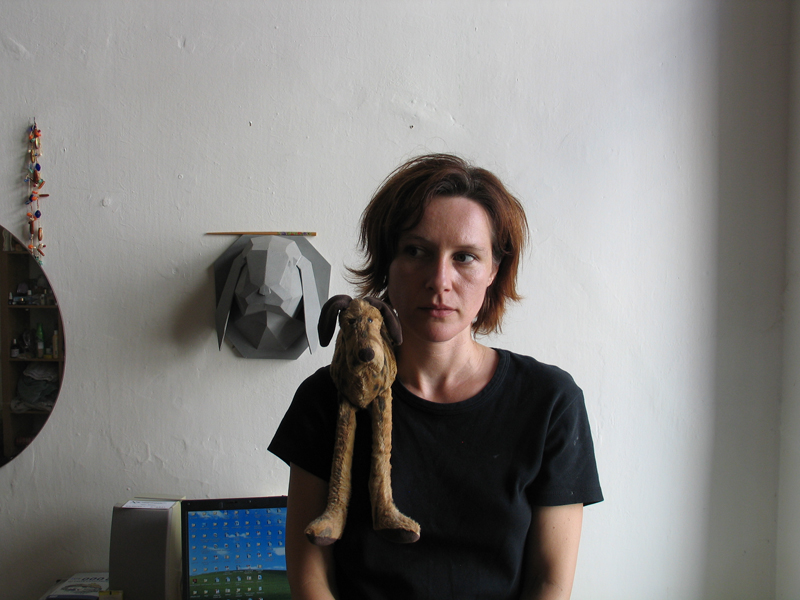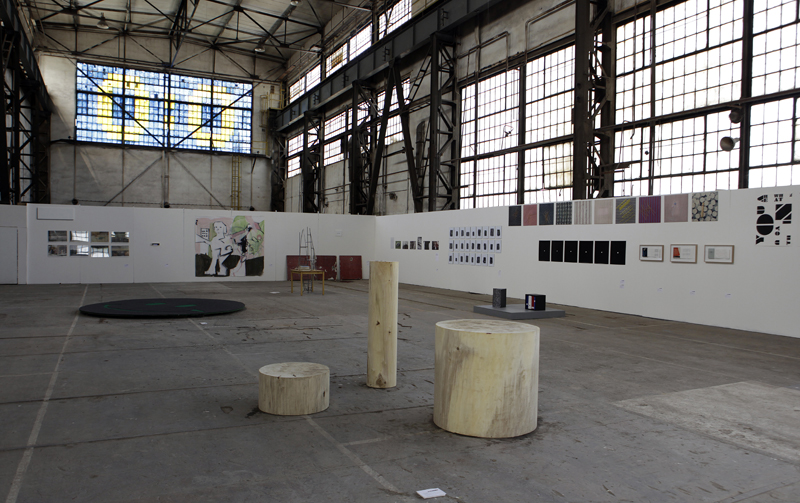Edith Jeřábková On Prague Biennale 4 (Interview)
The Prague Biennale 4 is about to end. ARTMargins discusses the event with Edith Je?ábková, the co-curator of the Biennale’s Czech section. Je?ábková is a curator at the Klatovy/Klenová Museum in Plze?.
ARTMargins: What was your involvement in the Prague Biennale?
Edith Je?ábková: I curated the Czech section (“White Paper, Black Bride”) together with Ji?í Kovanda. We have worked together before. I recently curated two of his shows. We also thought that our ideas were similar, so we decided to work as a team.
A.M.: What were your curatorial priorities?
E.J.: We wanted to look at the Czech section within the context of the Biennale as a whole, not as a separate exhibition. At the same time we tried to focus on one theme to make the section a little more focused. We had the privilege of being able to work directly with the artists we selected because most of them live in Prague. They produced their works for this venue and cooperated with us much more than artists from outside of the Czech Republic could have done. Since we knew this space well we wanted to use the opportunity to find an overarching topic that could represent Czech art today. We wanted to draw attention to the abstract and geometrical elements together with the more conceptual ones. Another thing that was important to us was historical continuity. That’s why we invited several artists whose work reached its peak already in the 1980s. As the section title “White Paper, Black Bride” suggests we proposed black and white as a departure point for the artists. We did not insist on a literal translation of this proposal, treating it more as a possibility for minimalist reduction. The result was quite a wide range of concepts simply because we did not want to force the artists into something that would be outside of their own genre or work habits.
A.M.: Can you tell us something about the selection process?
E.J.: It was individual with each artist. With some we knew exactly what we were going to present, especially with the older generation. We had a basic idea of what we wanted from each artist from the beginning. With the younger artists, especially with those who work with space and context, our intention was to encourage them to do something new for this location. So these artists made suggestions for their projects and we then decided what we thought was suitable in light of the whole exhibition. As is always the case with low budget events, with some artists we were not sure until the very end what they would bring us. We just knew the general idea of their projects and then we saw the execution a couple of days before the opening. But of course it is important that you work with artists you trust and this was the case with all of them.
A.M.: Were you given any parameters when it came to the decision as to which artists to include? Was there a theme or guidelines, or were you free to work out your own concept for the space you curated?
E.J.: We had total freedom, which was perfect for us. That was the real (only) benefit of this event since you pretty much had to organize everything else yourself. On the other hand I have heard that some of the other sections didn’t even have that freedom. But we could do what we wanted – except of course that there was no budget for anything.
A.M.: What do you think the role of the Prague Biennale can be in the context of other Biennales, in what seems to be an ever increasing number of such events?
E.J.: The Prague biennial is much smaller than other Biennales and it is more marginal than others. It does however present a good opportunity for younger curators. I think the organizers could actually use this young curatorial angle more to take a fresh look at contemporary art. In previous Biennales I used to like the sections that were more conceptually focused. You don’t see that kind of focus very much this year and I’m a bit disappointed about it. Still, it is important for the Czech Republic to have a platform for international contemporary art. I don’t know if people abroad know that there aren’t many institutions that show international art in this country. One of the reasons for this is the sustained paralysis of our National Gallery which is not doing its work properly. There are some galleries that are trying hard to make up for that. So I think it’s really important for us to have the biennial, even though its quality needs to be higher in the future and the whole conception should be opened up to new ideas.
A.M.: Do you like space where the Biennale is held? How does it reflect on the event?
E.J.: I was talking with Ji?í Kovanda and we both agreed that it would be good to emphasize this raw, decaying space a bit more in our section by hanging some works on the bare walls. We wanted to work with the space and the dirty old walls, not only with the artificial panels and dividers. How to: configuring secure access via FTP in Debian .
A.M.: Could you say a little more about the history of the Biennales in Prague? I know that there has been plenty of controversy. At some point there were in fact two biennials…
E.J.: Yes. The first biennale was organized by Helena Kontová and Giancarlo Politi from the magazine Flash Art and Milan Knížák from the National Gallery at Prague’s Veletržní Palác. However, the visions of these individuals wereradically different , so there was quite a bit of conflict. Next time around, Flash Art and the National Gallery organized their own events, so there were then two biennials. It was an interesting competition. At the time we laughed at this situation but in the end it brought a lot of international art to Prague. Even though the overall quality dropped quite noticeably, it was almost a good thing to have two such events here.
A.M.: What is the situation now?
E.J.: Knížák decided to organize his event at the National Gallery only every three years so that it would not overlap with the Flash Art Biennial.
A.M.: Thank you for this conversation!
Prague, June 5, 2009







